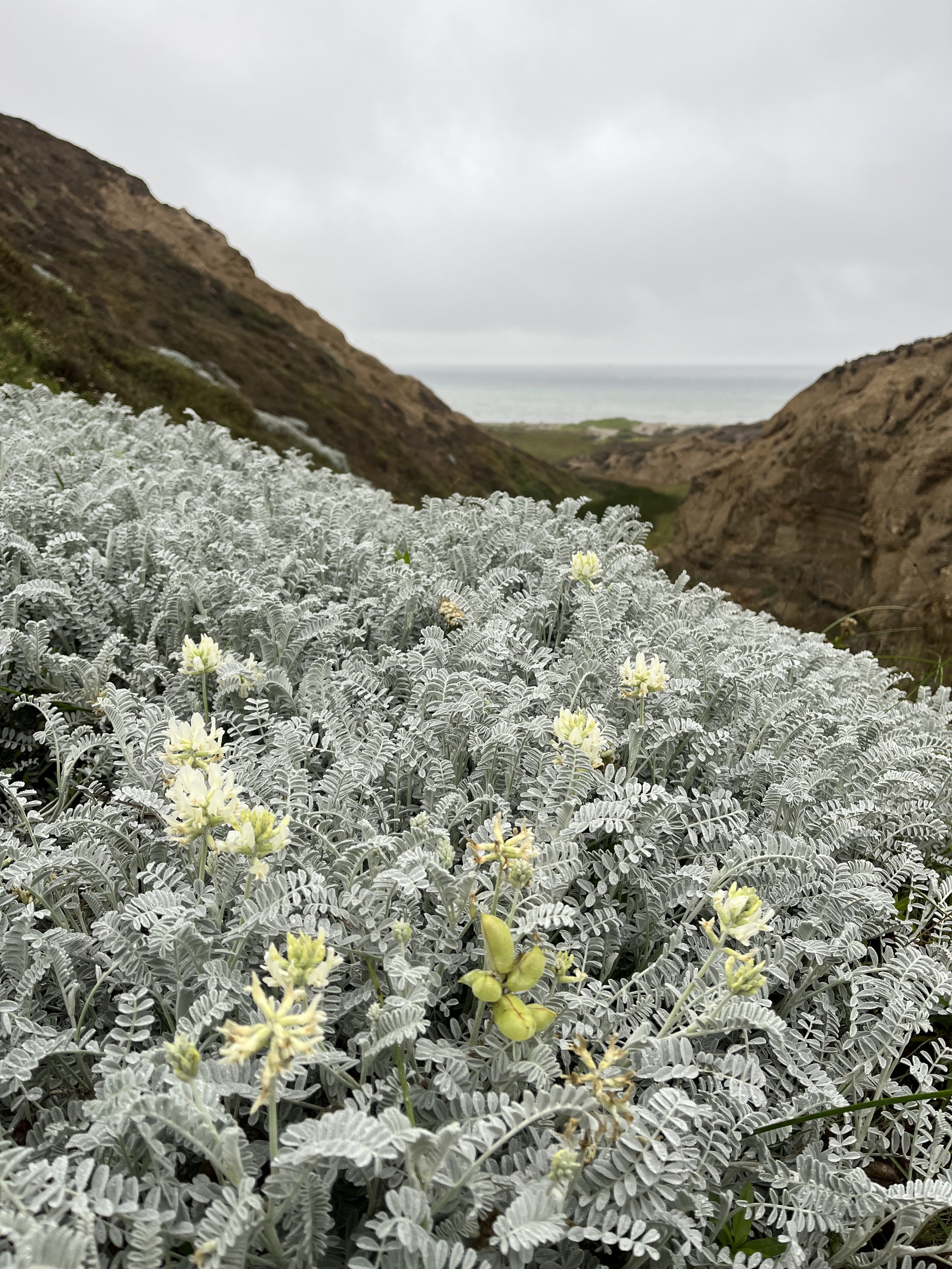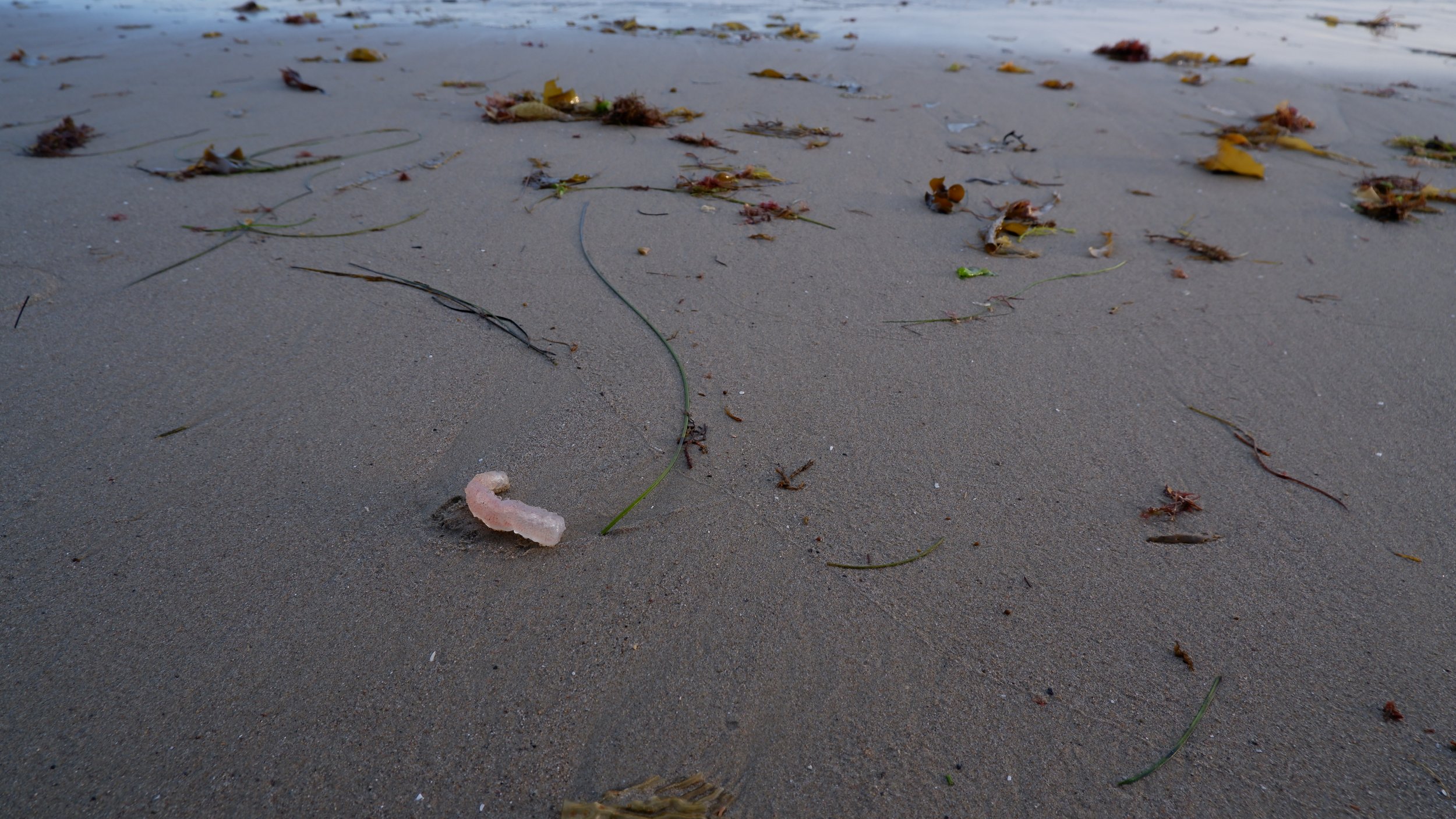I know the title is confusing but this is a page for all things nature
Slender Crab Spider (Tibellus oblongus)
This could be T. maritimus but this specimen was found on the coast. Adults have a pair of dark spots on the rear 1/3 of its abdomen. Slender crab do not spin webs, instead they spend most of their time on grasses, leaves, stems and stocks - waiting to ambush prey. They have a Holarcic distribution (one that comprises the northern hemisphere). 1 2
San Miguel Island Milk Vetch (Astragalus miguelensis)
Though called the “San Miguel Island Milk Vetch” this plant is found on five out of the eight Channel Islands. It is part of the Fabaceae (pea, bean, and Legume) family, and a perennial herb meaning that it lives more than two years.
The Astragalus genus is the largest plant genus at about 3,000 species; while highly toxic they grow in some of the most inhospitable places to most plants. A common name for some of these plants in North America is “Locoweed” which contains Astragalus but also the genus Oxytropis 1 2
Northern Elephant Sea (Mirounga angustirostris)
The males are known for their large snouts which are inflatable noisemakers! Genetically bottlenecked by hunting in the 1800s a small population survived in Mexico and increased in the 1900s. Pups are black until 6 weeks, and when males reach 7 years old they develop the proboscis noses and thick calloused necks. Adults can be 13 feet and 4,400 pounds! And they travel up to 13,000 miles roundtrip for migration. 1
Lace Lichen (Ramalina menziesii)
Lichens are a combination of fungi and algae, the fungus helps obtain water and nutrients while the algal components uses photosynthesis to make sugars. It grows up to a meter and length and ranges from Baja to Alaska and is found in damp areas. Often mistaken for Spanish moss found in the eastern and southern parts of the US. Mule deer eat it and various birds use it for nesting. In 2016 it became California’s state lichen! 1
California Buckwheat (Eriogonum fasciculatum)
Most commonly recognized by it’s small white and pink clusters at nodes (in the photo the flowers have dried). It commonly grows in hot chaparral regions - among southern California and northwest Mexico. Some tribes would make tea from the leaves, stems, and roots; others used the seeds raw 1 2
Western Columbine (Aquilegia formosa)
Aka - the crimson or red Columbine; Aquilegia comes from the latin aquila which means eagle (named after the petals that look like talons) and formosa means beautiful. The Gitxsan and Wet’suwet’en peoples ate the nectar as a candy and some Plateau tribes used it for perfume. Hummingbirds are the primary pollinators but bees, butterflies, and flies help out 1 2
Belladona Lilly, Naked Lady (Amaryllis belladonna)
Native to the Cape Province of South Africa and usually growing among rocks, it has become naturalized in many places around the world. Growing leaves in spring or late Autumn, seeds are wind dispersed in the winter. All parts of the plant are toxic. Though it has been noted that alkaloids in the plant have properties to fight malaria. belladonna comes from the Italian “bella donna” - which translates as beautiful lady. 1
*Also ignore the succulents, they are not part of the plant
Monterey Cypress (Cupressus macrocarpa)
Native to California, its fossil population is widespread though only two relic populations exist (Pebble Beach & Point Lobos). Seeds were collected in 1838 and sent to Europe but it was formally named in July of 1846. It has found favorable conditions in New Zealand and fully naturalized. They refer to it as “macrocarpa” and used it for posts before electric fences were popularized. 1 2
Pyrosome (Pyrosoma atlanticum)
These are Tunicates - which are plankton feeders. Like coral the organism is a conglomerate of individuals; each bump is a single zooid. Normally they live in warm waters such as the Ivory Coast, Australia, or Florida; they started showing up on the West Coast in massive numbers after the high ocean temperatures from 2014-2017. They have bioluminescence to communicate and Pyrosomes translates to “Fire Bodies” in Greek. 1 2 3
Santa Cruz Fox (Urocyon littoralis santacruzae)
The Channel Island fox is a descendent of the mainland grey fox, though smaller (12-13 in./4-5lbs). Each island population is recognized as separate endemic subspecies. (Ex. San Miguel foxes have smaller tails due to one less vertebrae, and longer noses) 1
Arroyo Lupine (Lupine succulentus)
Lupinus is part of the legume or bean family, and has distinct palmate leaves. The Arroyo Lupine is the most water tolerant of all lupines 1










